A fully house-trained adult dog should have the chance to eliminate outside at least four times a day. However not all dogs behave, and some adolescent or adult dogs (over six months of age) will urinate or defecate inside the house. Normally it’s only in certain locations e.g. in rooms you don’t often use, or only on the tiles, or child’s bed or under certain conditions e.g. when they are alone, during greetings, play or reprimands. Knowing when and where can help indicate the cause and how to correct it.
For a new dog entering the household, follow the exact same steps as toilet-training a puppy.
For a dog established in the household that develops toilet training problems, you need to first try and figure out why the dog is soiling inside.
Is It A Health Problem?
Always rule this out first with your vet – a common problem is urinary tract infections or incontinence in older dogs but even a change in diet can cause a gastrointestinal upset that causes your dog to eliminate inside. There are also a number of medications that can cause frequent urination and house soiling.
Could Your Dog Be Anxious?
Is it a sign of anxiety (older dogs can develop this)? Signs of separation anxiety are when your dog appears nervous or upset right before you leave and only soils inside when they are alone. Anxiety can also be caused by major changes e.g. new member of the household (animal or person) they dislike, or permanent departure of a loved family member. Dogs who suffer from anxiety usually eliminate on furniture, beds or sofas—areas that smell strongly of particular people or other animals.
What They Are Used To?
Is it their background? If your dog only soils a specific surface e.g. cement, carpet etc. then they may have developed a surface preference for elimination. A dog will usually prefer to eliminate on the surface they used as a six- to ten-week-old puppy but surface preference can also be caused if they have been housed for a period of time in a place where they are forced to eliminate on a particular surface e.g. the concrete floor of a shelter, the bottom of a hospital cage or newspaper in their crate. You can help teach your dog to eliminate in the correct area by adding a bit of their preferred surface to that area e.g. a slab of concrete, carpet or paper to the grass area. Over of a few days you can try adding grass clippings to the slab until they are completely comfortable and you can take the slab away.
Is Your Dog Submissive or Excited?
Is it submissive or excited urination? If your dog pees when you come home or guests come over, this may be a sign of submissive urination. Submissive urination will be accompanied by submission postures like cowering, ducking their head and averting their eyes or flattening their ears. Exited and submissive urination is quite common in young puppies and even certain breeds, especially females. Most will grow out of it eventually (usually about a year) but there are a few things that will help:
- If possible, greet your dog outside and ensure all greetings or goodbyes with your puppy are as quiet and calm as possible.
- Try tossing a handful of small treats or a favourite toy in their direction to distract them before they greet you.
- Wait until they have completely calmed down before interacting and then do so calmly, squatting down (not looming over them) and looking off to the side not straight at them.
- Teach your dog to ‘sit’ before they greet people and when you or visitors greet your dog pat them under the chin or chest, not on top of his head.
Have they started marking?
The most common reason for urine marking is to claim territory but it can also be in response to frustration, stress or an anxious situation. This also may be a sign of a dominance issue i.e. if there is another dog on the property or your dog doesn’t “know its place” in the family hierarchy. It can also simply be a bad habit.
This is rarely a problem if your dog has been neutered/spayed. If you conclude that is it marking then you need to go back to the basics of toilet-training a puppy and or try the buddy system below. If they mark in predictable areas regularly place treats under and around those objects or try to discourage your dog from returning there by using double-sided sticky tape or other types of harmless but unpleasant booby traps or obstacles to that area. Regularly cleaning products don't contain odour neutralising technology so it's important to use a quality odour eliminator like Odorex® Animal Odour Eliminator to clean the affected areas so to discouraged your dog from peeing in these favourite spots ie. marking.
Another effective method to help an older dog with toilet training problems is called “The Buddy System”.- Tie your dog to you (with a leash that’s approximately six feet long) at all times when inside. That way you can keep an eye on them while getting on with your routine. You can start to loosen the leash after a while, effectively giving them less supervision.
- Make sure you designate a toilet area outside and do not let your dog eliminate elsewhere. Lead them to that spot, use your verbal command and praise/treat them immediately when they go.
- If you see your dog start to eliminate e.g. lift their leg or squat somewhere besides the designated spot, immediately pick them up, take them to the correct spot, and use your verbal command. It is very important that you correct the unwanted behaviour during or before it occurs so your dog can associate that with an unwanted behaviour.











